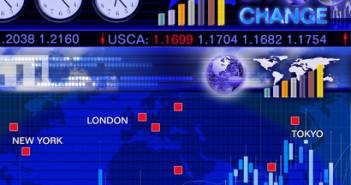By Alex Edwards at UKForex, an international money transfer service.
This week began steadily. Events in Russia/Ukraine dominated the headlines, but the impact on financial markets remained fairly limited. UK PMIs printed broadly in line with expectations, helping to support GBP/USD above 1.6650 early in the week. US data, including Personal Income and Spending, Manufacturing PMI, ISM Manufacturing all printed better than market expectations, but GBP/USD held on.
As expected, the Bank of England left interest rates and QE unchanged on Thursday. GBP/USD jumped to 1.6739 on the announcement that the central bank would reinvest the £8.1bn principal from its maturing March 2014 gilt.
It came back off almost as quickly, but the news provided good support to GBP/USD throughout the day and heading in to the end of the week. Cable then tracked EUR/USD higher as ECB President Draghi spoke following the ECB’s decision to leave interest rates in the EZ on hold, trading to a high of 1.6775 in advance of the US Non-Farm Payrolls data.
Markets were looking for an increase in February payrolls of 151,000, and for the unemployment rate to remain at 6.6%, with the bad weather taken into account.
The ECB left key interest rates on hold yesterday. More interestingly, ECB President Draghi continued to sit on the fence in his accompanying press conference, saying that the inflation outlook is currently no worse than it was last month and pointing out that there had been normalisation in short-end money markets.
There were some growing expectations heading into the press conference that Draghi would announce a suspension of the bank’s Securities Market Program (SMP), a government bond purchase facility that has been in place for almost four years. He didn’t, and instead said that the bank would continue to monitor the situation and that sterilisation remains an option.
The lack of any action, and the failure to signal future action, saw EUR/USD gap higher through stops under and over 1.38 and onwards to a high of 1.3872. Not everyone is totally convinced Draghi will be able to keep kicking his can down the road, and many feel that at some point soon, action will be needed to stave off the threat of deflation.
The AUD was one of the big winners this week. The Reserve Bank of Australia left interest rates on hold at 2.5%, saying that whilst monetary policy would remain accommodative, it saw a likely period of steady interest rates ahead. The RBA also said that the exchange rate remained historically high and that it would need to fall to support balanced growth.
Retail sales for January came in at +1.2% vs. expectations for 0.5% and the trade surplus for January printed at $1.43bn vs. expectations for $0.59bn, boosted by an increase in gold exports. RBA Governor Glenn Stevens testified before the parliamentary committee on Friday.
It’s been said before and so didn’t take the market entirely by surprise; AUD was still high, interest rates would remain stable, monetary policy was accommodative, labour market was still soft and house building was rising strongly. AUD/USD broke through .91 on Fridaymorning, but it wasn’t a convincing break ahead of the much anticipated US NFP’s.
Further reading:Â EUR/USD: Trading the US Non-Farm Payrolls



